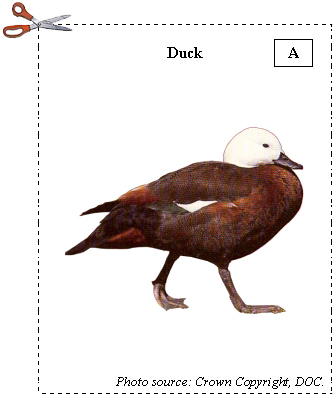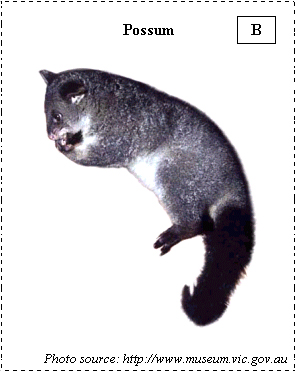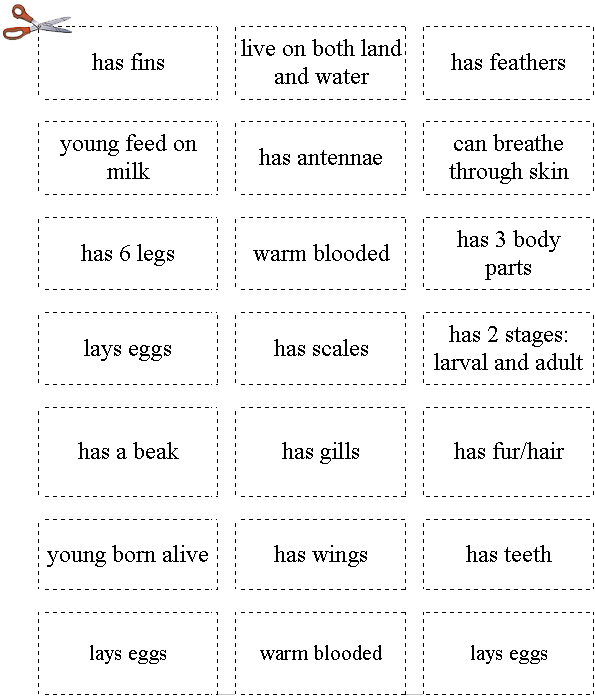Animal picture cards
0
Overview
Using this Resource
Connecting to the Curriculum
Marking Student Responses
This task is about what features animals have and what groups they belong to.
Your teacher will give you instructions about this actvity.
Animal Picture Cards




Larger Animal Groups

Features of the Larger Animal Groups

Task administration:
Equipment:
Scissors; coloured copies of Animal Picture Cards; Larger Animal Group Labels; and Features of the Larger Animal Groups.
- Students work in pairs or small groups and identify the larger animal group that their animal picture card belongs to, and the features that place that animal in that group.
- Colour copies of animal picture cards are needed. These could be made into a class set and laminated. The labels could also be prepared for students prior to the task and also made into class sets. Separate sets of feature labels will be needed for each animal cards.
- It is probably best if students do one animal at a time.
- NOTE: Not all the labels are needed.
Instructions to be read to students
- Cut out the Animal Cards (if they haven't been pre-cut).
- Cut out the Larger Animal Groups labels and put the correct Larger Animal Group under each Animal Card.
- Cut out the Features of the Larger Animal Groups and for the animal you have a picture of, place four of these features under this picture.
Level:
2
Curriculum info:
Description of task:
This practical task assesses students' ability to identify the larger group that four animals belong to and then to identify the features that those groups have using animal cards and labels.
Curriculum Links:
Science capabilities
The capabilities focus is brought about by the conversations you have and the questions you ask.
Capability: Gather and interpret data
This resource provides opportunities to discuss using careful observations as evidence.
Science capability - Gather and interpret data (Tāhūrangi)
Capability: Use evidence
This resource provides opportunities to discuss using evidence.
Science capability: Use evidence (Tāhūrangi)
Science capabilities:
Making Better Sense:
Answers/responses:
Animal Groups:
Duck – Bird
Possum – Mammal
Weta – Insect
Frog – Amphibian
Features of the Animal Groups: The main features that students are expected to identify. Any 4 of:
Duck – has feathers
- has wings
- lays eggs
- warm blooded
- has a beak
Possum – has fur/hair
- young born alive
- young feed on milk
- has teeth
- warm blooded
Weta – has 6 legs
- has 3 body parts
- has antennae
- lays eggs
Frog – lays eggs
- can breathe through the skin
- live on both land and in water
- has 2 stages: larval and adult
NOTE: Students may also mention secondary features for example: scales on the ducks legs, etc.

